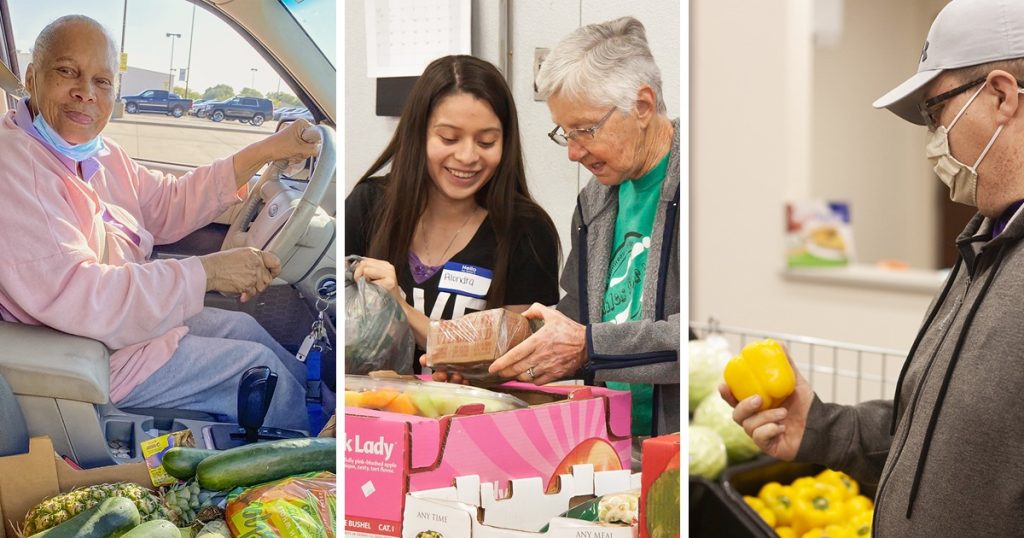
Missourians using food pantries made difficult trade-offs to feed their families in 2021. A new report from the University of Missouri found that 46% of food pantry clients had to choose between paying for food or utilities last year, while 38% had to decide between paying for food or medicine/medical care and 34% had to choose between purchasing food or paying for housing.
That’s according to Food Assistance & Hunger in the Heartland 2021: State Report for Missouri which was conducted by the MU Interdisciplinary Center for Food Security to better understand the characteristics of food pantries and circumstances of food pantry clients. The report was prepared for Feeding Missouri and includes results obtained from six regional food banks — Second Harvest Community Food Bank, St. Louis Area Foodbank, Harvesters – The Community Food Network, Southeast Missouri Food Bank, The Food Bank for Central and Northeast Missouri and Ozarks Food Harvest — which collectively distribute more than 120 million pounds of food each year. This was the first time these in-state partners have worked together to examine the impacts of hunger in Missouri.
“It is important to remind ourselves that food insecurity doesn’t happen in a vacuum,” said Bill McKelvey, co-author and project coordinator with the center. “People may also struggle to afford other essentials like housing, transportation and medical care.”
The Unites States Department of Agriculture Economic Research Service found that 11.5% of all Missouri households were food insecure in 2020 — the most recent year for which data is available. All total, about 700,000 people in Missouri sacrifice the quality, variety or desirability of their diet or go hungry at times during the year.
For families using food pantries affiliated with Feeding Missouri’s coalition of six regional food banks, the statistics are even more dire. According to the new study, 70% of households that used food pantries in 2021 experienced food insecurity. To cope with their circumstances, 61% of households purchased the least expensive food, 44% consumed food past its expiration date and 42% purchased food in dented or damaged packages.
“This report illustrates the critical role food banks and pantries play in supplying food to struggling families,” said Scott Baker, state director for Feeding Missouri. “In 2021, our network reached an estimated 653,000 people through food pantries alone. Additional people were reached through meal sites and other types of feeding programs.”
MU researchers found that hunger impacts a wide range of Missourians. The report shows that 48% of households have at least one working adult and 28% have a household member who is working full-time. Among the clients surveyed, 66% identify as white, 19% identify as African American, and 7% identify as Hispanic. Eighty-one percent of households have an adult member with a high-school degree or higher level of education. Additionally, 42% of households have at least one adult over the age of 65 and 41% have at least one child under 18.
The report also shows that health is an area of concern for food pantry client households. Some 60% of households have a member with high blood pressure, 48% have a member with high cholesterol and 41% have a member with diabetes or pre-diabetes. Finally, 39% of households have a member with no health insurance of any kind.
The research team at the Interdisciplinary Center for Food Security — which included multiple faculty, staff and students — was chosen to conduct this study because of members’ considerable experience in the development and implementation of survey research, including several projects focusing on food pantry clients in central and northeast Missouri. The study involved an online and telephone survey of 344 food pantry directors and in-person interviews with 3,377 food pantry clients conducted on-site at food pantries.
Data collection for the study was completed during the spring and summer of 2021, a time when COVID-19 was an issue in the coverage area. Sixty-six percent of pantries reported serving more clients in 2021 compared to 2020 and 83% changed the way they distributed food, such as changing to a drive-thru distribution.
The study also shows a gap between Missourians who are eligible for safety net programs and those who participate. For example, approximately 77% of households surveyed have incomes that make them eligible for the Supplemental Nutrition Assistance Program (SNAP), but only 41% participated in SNAP in the previous year.
Food Assistance & Hunger in the Heartland 2021: State Report for Missouri is part of a larger study that included Missouri, Kansas and parts of western Illinois. For more information, visit foodsecurity.missouri.edu.
Research at the Interdisciplinary Center for Food Security — which is housed in the Division of Applied Social Sciences and part of the College of Agriculture, Food and Natural Resources — is used to inform policy makers, researchers, government agencies and a variety of local, regional and statewide non-profits. Other projects include the Missouri Hunger Atlas and the center’s partnership with MU Extension to host the Community Food Network, a resource for local and regional food systems stakeholders working on community-based initiatives.